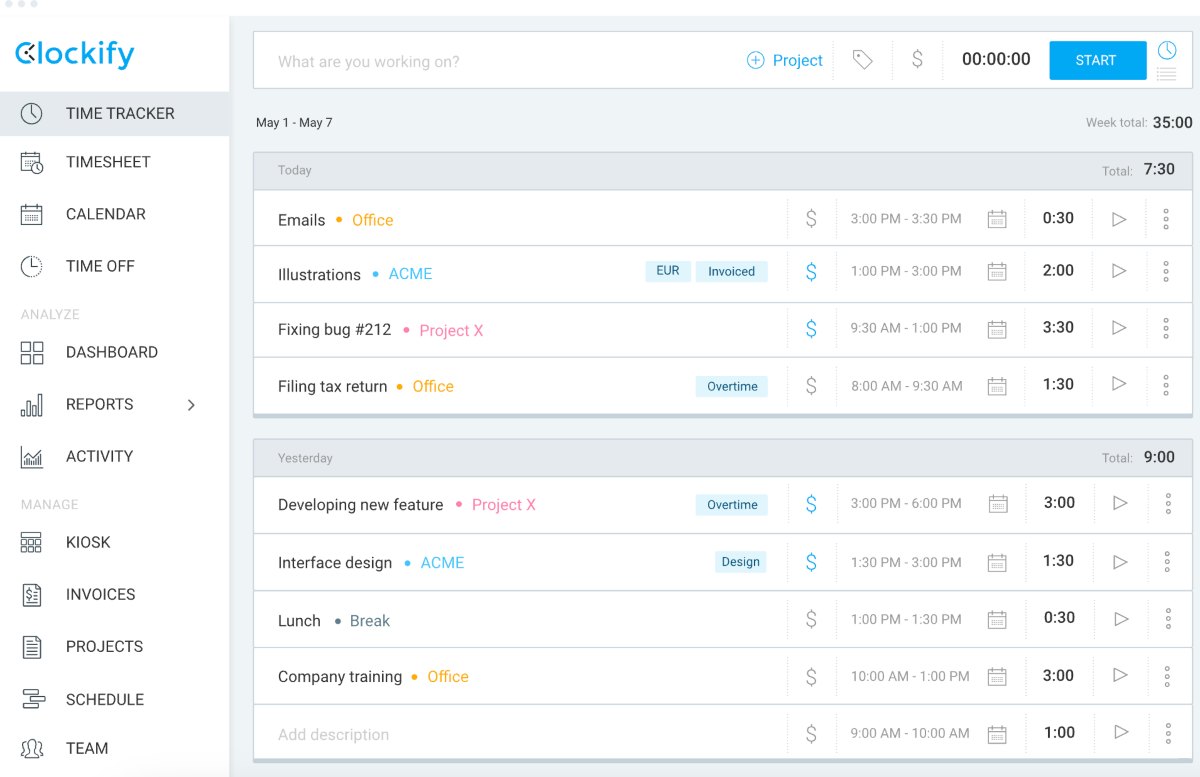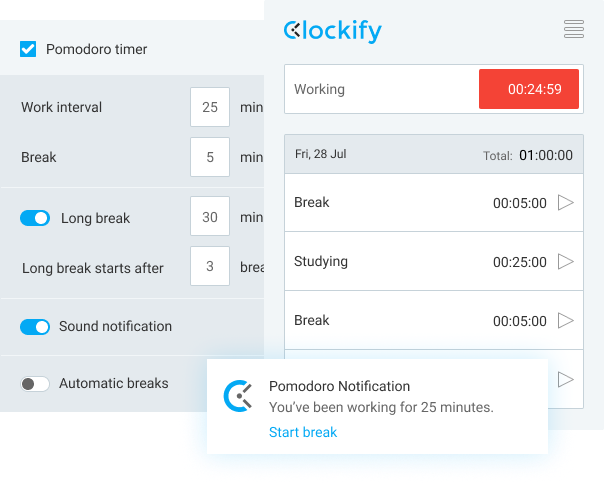We’re all used to sleeping come nighttime, which is why third shifts often spark debates among remote and on-site workers.
In an effort to learn more about them, I’ve done the research and contacted experts to find out if third shifts are as productive as day shifts, as well as to uncover tips about implementing them.
Let’s go on a journey and find out more about:
- The notion of third shifts,
- Typical third shift jobs,
- Advantages and drawbacks of the third shift, and
- Expert tips on implementing the third shift.

- The third shift (graveyard shift) represents a work schedule that typically starts in the late evening hours and lasts up until the first shift starts.
- Third shift hours span from 9 p.m. to 7 a.m.
- Working the third shift comes with a number of benefits, some of which are decreased distractions, lifestyle improvements, and improved focus on additional tasks.
- The disadvantages of working the third shift are disrupted circadian rhythms, negative impact on mental clarity, and poor social life.
- Employees that are looking to implement the third shift should offer incentives to employees, organize the transition into the third shift efficiently, and make the shift itself shorter.
Table of Contents
What is a third shift?
Simply put, the third shift represents a working period that usually starts in the early night hours and lasts until morning. In other words, workers who clock in in the evening hours and work throughout the night usually fall under third shift workers.
It is usually referred to as the graveyard shift due to working during nighttime when everyone’s asleep and the streets are empty.
💡 Clockify Pro Tip
Working night shifts can have negative effects on your body and general well-being, such as circadian misalignments or vitamin D deficiency. To stay healthy while working night shifts, read our following blog that includes expert tips:
What are third shift hours?
As previously mentioned, third shift hours usually start from the time the second shift is over — practically, the third shift starts anywhere between 9 p.m. and midnight and lasts until the morning shift starts (6–9 a.m.).
Also, people can work third shift hours without committing entirely to the third shift. In other words, they work irregular work schedules known as swing shifts where work hours typically overlap the day and night shift.
Third shifts don’t exactly entail a concrete time range, as the work hours usually depend on the industry and the type of jobs that third shift workers perform.
However, the general consensus is that companies that include third shifters usually aim to divide the day into three 8-hour shifts — as that allows them to cover all bases and leave no space to drop the ball.
💡 Clockify Pro Tip
Aside from the traditional first, second, and third shifts, many businesses have started implementing different work schedules that fit their business needs and models. To find out more about them, check out the blogs below:
What are typical third shift jobs?
Various industries incorporate third shift jobs into their work schedules due to different demands. Such demands could be traced to several different business needs, such as:
- A demand for an emergency response,
- A requirement to cover a business project at all hours,
- A plan to increase revenue, and
- A decision to offer constant service.
Just to name a few, the most typical third shift positions include:
- Healthcare professionals,
- Emergency services workers — firefighters, police and military officers, dispatchers, etc.,
- Drivers and transportation professionals,
- Hospitality workers,
- Customers support representatives, and
- Retail workers.
These are the first that come to mind when talking about third shifts, but naturally, many different industries and job descriptions integrate third shifts into their routine.
💡 Clockify Pro Tip
Alongside shifts, work schedules contain additional employee information such as work locations, responsibilities, and work hours. To find out more about work schedules, read the following blog:
How does the third shift compare to the first and second shifts?
In essence, the three most common shifts compare in terms of:
- Business demands, and
- Shift workers’ productivity.
For a long time, the general consensus was that the early risers are the most productive among workers who work in shifts. Whether it’s due to the complexities of our circadian rhythm or simply the fact that the business world usually operates in the mornings — the world favors the morning larks.
However, with the rise of remote work, third shifters have started making significant contributions during nighttime. In fact, according to the Future of Time study, by the Adobe Document Cloud, 26% of Gen Z employees feel the most productive between the hours of 6 p.m. to 3 a.m.
When it comes to business demands, most businesses usually operate during the day. However, some include second and third shifts to:
- Increase their workload,
- Spread out their tasks over the course of the entire day,
- Cater to different industries, and
- Provide immediate response to their customers.
In terms of general comparison among the three most common shifts, let’s take a look at a table and see the numbers.
| Types of shifts | Other common names | General working hours | Who’s it great for? |
|---|---|---|---|
| First shift | Morning shift or day shift | 8 a.m. to 5 p.m. | Early birds and for businesses that usually operate in the mornings |
| Second shift | Afternoon shift or evening shift | 3 p.m. to 1 a.m. | Employees productive in the afternoon hours and businesses that operate in multiple time zones. |
| Third shift | Graveyard shift or night shift | 9 p.m. to 7 a.m. | Night owls and businesses that require on-call service or operate at nighttime. |
What are the advantages of the third shift?
If you’ve been thinking about implementing a third shift, you may be having second thoughts since we’re naturally inclined to think that third shift is quite bad for us.
In the effort to uncover the truth, we’ve done the research and spoken with team leads, experts, and employees who work graveyard shifts to get to the bottom of the topic. Let’s see what they had to say.
Third shift helps eliminate distractions
We all know how unproductive day shifts can be on certain days. Noise, phone calls, and answering to colleagues undoubtedly affects employees’ workflow and prevents them from engaging in deep work and finishing their objectives in time.
On the other hand, working third shifts often means fewer people and fewer distractions. This comes particularly handy for businesses that schedule third shifts to communicate with clients from different time zones.
The Team Lead of Enterprise Support at Bluecat Networks, Stefan Timotijević, shared his thoughts on working late, noting that less distractions can be beneficial to one’s productivity:

“One of the benefits of working the third shift is definitely the fact that, depending on the type of work you are doing and which coverage (local, regional, global) your job has, it can be pretty quiet the whole shift.”
On a similar note, CAKE.com’s Plaky Content Manager, Andjela Vidojević, expressed similar beliefs on distraction-less graveyard shifts:

“By far, the biggest benefit of working the night shift is having fewer distractions than usual. For example, I was much less tempted to check my phone all the time as not many people were likely to text me at that time of day.”
Third shift offers lifestyle benefits
Third shifters get to tend to their needs throughout the day and focus solely on work come nighttime.
Even though the daylight world caters to early risers, most daytime employees simply don’t have the time throughout the day to pay their bills, renew their driving licenses, or take their kids to practice, unlike third shifters.
Third shift helps employees focus on additional tasks
Most industries that operate on shift schedules tend to finish most of their work during the day.
Handling calls and communicating with customers or other businesses is usually done during the first and second shifts. This in turn means that third shifters can solve problems that were deprioritized during the day.
To understand more about the mentality of working third shifts, I’ve spoken with CAKE.com’s Customer Support Agent, Nikola Roskić. Nikola claims that the third shift often frees up time to catch up with standby tasks:

“Even though working third shifts long term is not advised, they do help me and my team focus on the tasks at hand. Since there’s generally less traffic throughout the night, we have more time to focus on standby tickets and tasks that were not handled previously. In the end, wrapping up quickly gives you more time to relax and regain mental focus for the upcoming tasks.”
What are the disadvantages of the third shift?
As you might have guessed, working third shifts takes its toll on the mind, body, as well as employees’ general lifestyle. Let’s see what employees told us about the disadvantages from first-hand experience, so you can make an informed decision before introducing a third-shift schedule to your company.
Third shift disrupts employees’ circadian rhythm
The one thing all our experts and speakers agreed on is that working third shifts means a disrupted sleep schedule 99% of the time.
In simple terms, humans’ circadian rhythm is a natural oscillation that repeats roughly every 24 hours and is in sync with our internal biological clock. That practically means we’re programmed to sleep during the night and be awake and alert during the day.
Therefore, switching day and night causes body-wide malfunction, which often manifests through:
- Sleep disruption,
- Vitamin deficiencies,
- Cognitive impairments,
- Bad hormonal regulation, and
- Mood shifts.
Stefan, whom we mentioned in the previous lines, shared his experience with sleep deprivations from working third shifts:

“One of the worst drawbacks of working third shifts for me is a lack of sleeping schedule. It is very hard to get into a sleep routine, and very easy to break it. On top of it, whether you have 20 or 60 years under your belt, it is not something you will ever completely get used to. Also, lethargy gets a hold on you as you can’t get any sleep.”
Third shift can have a negative impact on employees’ mental clarity
First shifters get to work first thing in the morning after a good night’s sleep and reset. In turn, they have the fuel and energy to push through stressful situations and work obstacles.
On the other hand, third shifters clock in after spending some parts of the day awake, meaning they are already tired. In turn, their work production suffers and they can be less productive than the first shifters. Again, this is subjective and depends on the individual, which is why we turned to several experts for help.
A professor of business law at the University of Connecticut, Robert Bird, has published research on shiftwork and its effects on employees, and he claims that decreased mental clarity from working third shifts has a direct correlation with workplace accidents:

“Companies should avoid quickly rotating shift schedules, as that would leave workers in a constant state of sleep debt. Employees that work at night may be more fatigued, and thus more susceptible to workplace accidents than daytime employees due to lack of concentration.”
CAKE.com’s customer support agent Nikola supports professor Bird’s standpoint, adding that he had noticed a significant drop in energy when working night shifts continuously, which, in turn, increased the risk of accidents.
Third shift affects negatively on employees’ social life
Working night shifts rarely leaves room for socialization outside of work.
According to the US Bureau of Labor Statistics, 84% of wage and salary employees work a daytime schedule. Chances are, most of your employees’ friends and family work a different schedule than them, meaning they have small chances of actually socializing.
The Enterprise Support Lead, Stefan Timotijević, spoke candidly on the topic and how hard it is for third shifters to actually socialize in their free time:

“Maintaining a healthy social life while working a third shift is hard, even for the extroverts. When you are working, the rest of the world is asleep, and vice versa.”
Luckily, Stefan gave us a pro tip on surviving the third shift:

“If socializing is extremely important for you, don’t work night shifts. If you still have to, then I’d say that it is important to know your limits — coordinate your work obligations with your friends and family and try to find gaps in your schedules.”
💡 Clockify Pro Tip
We all want to achieve that work-life balance, but how hard is it actually? Read more work-life balance statistics and facts in the following blog:
Tips for implementing the third shift
Finally, we’ll talk about some general tips that can help managers, CEOs, and team leads implement the third shift as well as help ease employees into it.
Let’s start.
Tip #1: Offer incentives to third shifters
Working late comes with a lot of sacrifices.
As mentioned previously, graveyard shift employees often make compromises to balance out their social and private lives with work. Additionally, they tend to sacrifice their health and mental well-being to work late, which is why a good business model would be to offer employees incentives.
Most employers offer higher pay or bonuses, while some choose to provide their employees with the option to take additional personal days. Nevertheless, the conclusion is the same — reward hard workers who work late, and you’ll see a spike in both workforce numbers and productivity.
Tip #2: Communicate and organize the transition into third shift
If you’re considering transitioning your business’ work hours deep into the night, proper communication and organization is the key to keeping your workforce content.
In the words of the customer success manager at InCheq, Brianna Van Zanten, managers should facilitate the transition in order to keep the business running smoothly:

“The most crucial part revolves around ensuring seamless handoffs — making sure those in the third shift are well-versed in starting points and expectations. For an effective transfer of knowledge and a smooth transition to the third shift, crystal-clear communication is essential. Thorough documentation and organization play a vital role in maintaining continuity.”
Tip #3: Make the graveyard shift shorter
It’s partly subjective, but the numbers don’t lie — the majority of the population works the day shifts and there’s a reason for it — they are easier.
However, employers that do opt for late shifts in industries where the majority of operations occur during daylight hours could reap the benefits by working shorter shifts. For example, the hospitality and public transportation industries employees work way less during the night, as opposed to their daytime counterparts.
Simply put, make the third shift attractive for your employees by having them work less.
Keep track of your progress through the night: Use Clockify for time tracking and boosting productivity
Working through the night is challenging due to a number of factors, one of which is struggling to stay motivated, especially when the fatigue gets to your employees.
Therefore, boosting your employees’ productivity is essential, and Clockify is the perfect tool to aid your cause.

Clockify is a time tracking tool that lets you and your employees track the time you spend working on projects and tasks throughout the night. When you clock in, you’ll choose the type of project you’re working on, type in your first task, and start the timer — the app does the rest for you.
When the fatigue starts setting in, employees will be alerted to take a break by the Pomodoro timer — a Clockify feature designed specifically to help workers split long working sessions into working and break intervals.

Finally, when your employees are done working, the time they’ve spent working on tasks can be further exported and saved in PDF, CSV, or Excel sheets for analysis purposes.


